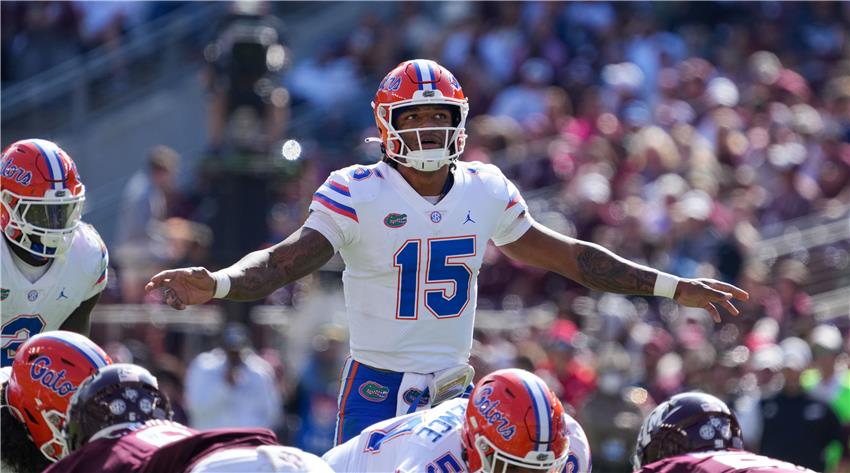
Running Towards a New NFL Era with Mobile Quarterbacks
It’s safe to say that the NFL of today is not the same league that it was 10 or 20 years ago. Out of the many differences from past generations, one of the biggest is the high population of mobile quarterbacks in the NFL.
Rather than there only being a few mobile quarterbacks, they now appear to be the majority. More importantly, the NFL’s biggest stars and best players are mobile quarterbacks, representing a massive shift within the league. But how and why did the trend of mobile quarterbacks come about and why is it here to stay?
For the record, the NFL has always had quarterbacks who excelled at using their legs. Past generations had players like Fran Tarkenton, John Elway, and Steve Young who were nimble and could make plays with their legs in addition to making throws from the pocket. But even with the arrival of a transcendent star like Michael Vick, who helped to lead the way for today’s mobile quarterbacks, the best quarterbacks in the league were still pure pocket passers like Tom Brady and Peyton Manning. However, the days of players like Brady and Manning dominating the league are over. They have been replaced by the likes of Patrick Mahomes, Lamar Jackson, Josh Allen, Jalen Hurts, Kyler Murray, and other super-athletic and mobile quarterbacks.
With more athletic and mobile quarterbacks slowly trickling into the league, defensive coordinators soon discovered that they were the types of quarterbacks causing the most problems for defenses. Their ability to elude pass rushers and extend plays became endlessly frustrating. It soon became apparent that having a quarterback who could make plays with his legs gave the offense a different element and a distinct advantage.
Along those same lines, mobile quarterbacks have become a necessity. Developing competent offensive linemen at the high school and college levels has proven far more difficult than developing pass rushers. As a result, the NFL now has a high volume of quality pass rushers but not enough capable offensive linemen who can block them. Therefore, quarterbacks need to be able to escape the pocket and extend plays. If they can’t, they are more vulnerable to getting sacked before receivers can get open down the field. In other words, having an athletic quarterback has become more of a necessity than a luxury.
Oddly enough, statistics show that mobile quarterbacks don’t get sacked less often than traditional pocket passers. However, athletic quarterbacks are undoubtedly harder to sack than pocket quarterbacks. Mobile quarterbacks take a lot more energy and effort from defensive players to track down before they get sacked. Also, by being able to extend plays, mobile quarterbacks increase the chances of wide receivers getting open by giving them more time to elude defensive backs.
Specifically, wide receivers are able to get behind the defense and create more explosive plays. Therein lies the true benefit of mobile quarterbacks. While they may not get sacked less than pocket quarterbacks, they are more capable of creating explosive plays down the field or picking up yards with their legs because they are able to run away from pass rushers.
This is another advantage that mobile quarterbacks have over pocket passers and why they have become more valuable. As great as Brady and Manning were, they could never take off and pick up huge chunks of yards with their legs. On the contrary, mobile quarterbacks are always a threat to escape the pocket and run for gains of 20-plus yards on any given play. This forces opposing defenses to put a dedicated spy on the quarterback to protect against these types of runs, leaving one less player to either rush the passer or drop in coverage. Defenses also have to worry about playing too much man coverage against mobile quarterbacks because it tends to leave a lot of empty space if they escape the pocket. In other words, having a mobile quarterback can help limit what opposing defenses can do, making them easier to predict and attack.
Of course, athletic quarterbacks also create the possibility of designed quarterback runs. In the late 1990s and early 2000s, NFL teams started to discover the Wildcat formation. Typically, running backs would receive the snap out of the shotgun and run the ball, allowing everyone else to be used as a blocker as opposed to traditional running plays that take the quarterback out of the equation. But with a mobile quarterback, teams don’t need to create a special formation or have a running back receive the snap. By running a designed quarterback run, teams get all of the advantages of the Wildcat formation without tipping their hand or eliminating the possibility of a pass play.
The obvious caveat is that mobile quarterbacks still have to be able to throw the ball. If they aren’t competent passers, some of the advantages of having a mobile quarterback disappear because they become too predictable and one-dimensional. However, mobile quarterbacks have taken over the NFL today because of the contingent of players who can do both. Players like Mahomes, Jackson, Allen, and others all have elite arm strength in addition to being great athletes. That combination of arm talent and athleticism is why players like Mahomes, Jackson, and Allen have become perennial MVP candidates according to betting platforms like FanDuel Sportsbook. It’s also why mobile quarterbacks have taken over the NFL and why this trend is here to stay.
